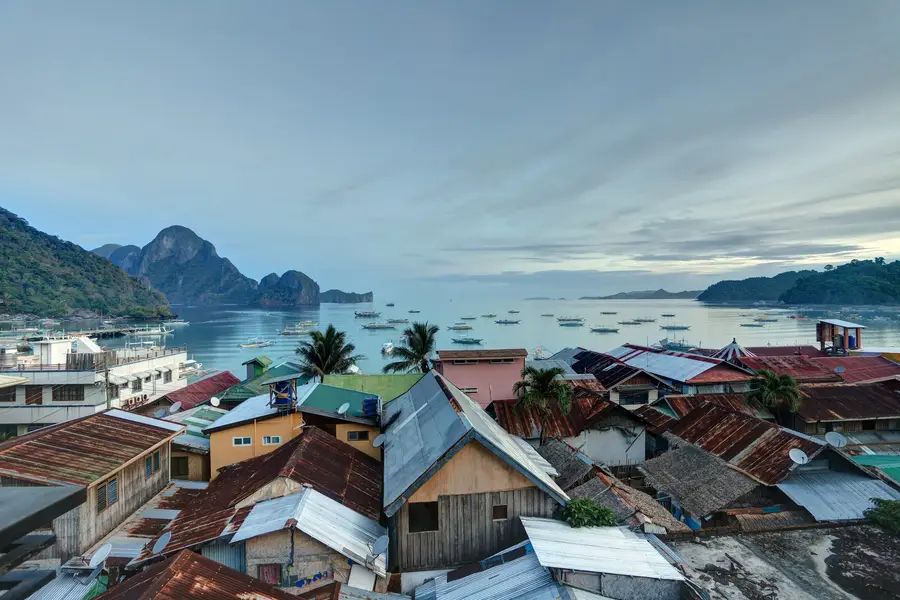How Climate Finance Can Fund Resilience in Small Island Nations

Julie Bayking
Mobilizing Finance Lead, USAID Papua New Guinea Electrification Partnership (USAID-PEP) Activity

Small island nations are on the forefront of climate change’s impacts. Rising sea levels, coastal erosion, and storm surges are just a few of the increasing shocks and stresses they face. As a result, these nations are seeing the foundation for their economies and way of life wash away – from agriculture and aquaculture to tourism.
The tragic irony is these nations are least responsible for global climate change. Climate finance from global partners like multilaterals, donor countries, and the private sector can help local efforts to adapt go even further toward building resilience.
But how can these small nations incentivize and attract the level of climate finance needed to rapidly adapt? We posed three questions to three RTI experts with experience in small island nations on how climate finance can fund resilience in these countries.
Julie: Many countries and organizations have issued sustainability bonds to attract private investment by offering a fixed return for funding environmentally sustainable initiatives that enhance climate resilience. For example, blue bonds in the Seychelles consisting of a government bond backed by a World Bank guarantee and Global Environment Facility concession loan have de-risked private investment to help the country rebuild its fish stocks. Risk mitigation instruments backed by governments and multilaterals can also help attract more private investment by providing guarantees and insurance. Governments can also collaborate with private sector entities to share the risks and rewards of developing and operating climate-resilient infrastructure like renewable energy projects.
Tom: Partners must play the right role in blended funds – multilaterals, with higher risk appetites and lower return requirements, can act as anchor investors in new funds and take first loss positions, which can attract private investors to new sectors or geographies they otherwise wouldn’t feel comfortable investing in. Project GAIA, launched by MUFG Bank and co-funded by the Green Climate Fund, uses blended finance to attract institutional investors like pension funds to climate resilient infrastructure investments, and includes several island nations. I have seen similar examples in renewables, resilient agriculture, the blue economy, and water sector – it’s a proven approach that can be scaled when you line up the right investors, projects, and structure!
Divina: As an archipelago, the Philippines relies on indigenous and renewable energy resources to provide energy security and climate resilience to the country’s power grid. Blended finance helped develop the country’s energy sector through a mix of development loans, sovereign guarantees, and private equity. In 2001, the electric power industry privatized and, since then, energy developers have relied on their own deep pockets and big institutional investors to fund energy projects. However, to ensure finance flows to climate-resilient energy infrastructure in isolated and rural areas, blended finance is needed, which could include a mix of equity, loans, and subsidies generated through a universal levy, such as a fee charged to consumers per kilowatt-hour.
Julie: By establishing clear regulatory frameworks with well-defined regulations and standards, governments can attract investors. In Papua New Guinea, the government recently launched an inclusive green finance policy to define the concept of green finance, provide guidance on it, and raise awareness among businesses and investors. Governments can also use tax incentives, subsidies, or grants as well as certifications that recognize and promote climate-resilient products and services to stimulate private innovation and investment. Palau’s climate change policy has attracted investment in climate resilience by integrating climate change into all aspects of government planning, working with the private sector to mainstream climate change into business decisions and practices, and establishing climate resilience funding mechanisms.
Tom: Countries have been successful when the public sector can identify priority resilience projects and approve policies that incentivize the private sector to invest alongside them, then work together to implement projects through well-defined frameworks like public-private partnerships. The public sector can also create frameworks for standardized instruments like green bonds, which can attract domestic or international investors at scale to fund priority resilience projects. Fiji is a great example – it established a green bond framework and was the first emerging market to issue a green bond to fund a mix of climate adaptation and mitigation projects.
Divina: The government of the Philippines has issued many policies designed to attract and sustain private investment in the energy sector. In late 2022, the Philippine Department of Energy allowed foreign nationals and foreign-owned entities to explore, develop, and use renewable resources in the country such as solar, wind, biomass, ocean, and tidal energy. This led to a 2,000-megawatt service contract awarded to the Copenhagen Infrastructure New Markets Fund, which is the first foreign firm allowed to have a 100% stake in developing offshore wind energy in the Philippines.
Julie: Governments have tried to adapt frameworks originally designed for extractive industries to climate resilience projects, which has made them unsuitable for investment. Securing funds for project preparation, feasibility studies, and risk assessment are significant hurdles to project development and investors continue to perceive these projects as being highly risky. Climate resilience projects also often require specialized skills and knowledge and reliable and localized climate data, both of which are lacking in many regions. Better coordination among stakeholders and sharing of information about available funding sources and successful practices is needed to bridge these capacity and resource gaps.
Tom: Data collection is a constraint, and many times data gaps make it difficult for countries to determine the climate risks they face now and in the future, as well as how those risks will impact their communities and essential infrastructure. Fortunately, many technology companies are now providing solutions like geospatial mapping of climate risks to help countries fill those gaps. Converting that data into economic analyses can help countries prioritize which resilience measures to take, but resource constraints make that a challenge. Sustainable long-term solutions require capacity building to help local governments perform that type of analysis and make the leap from data to climate resilience actions and policies.
Divina: The Philippines’ archipelagic topography poses significant challenges to implementing climate resilience projects. The diversity in island make up, culture, and language requires a market assessment in each target area. There are gaps in skills and absorptive capacity between and among highly urbanized areas and small island communities across the country. Lack of infrastructure also requires project designs that cater to each area’s limitations. While highly advanced energy systems are ideal, strategies that reflect each area’s specific context are more prudent for successful implementation.
Learn more about RTI’s Energy for Development portfolio.